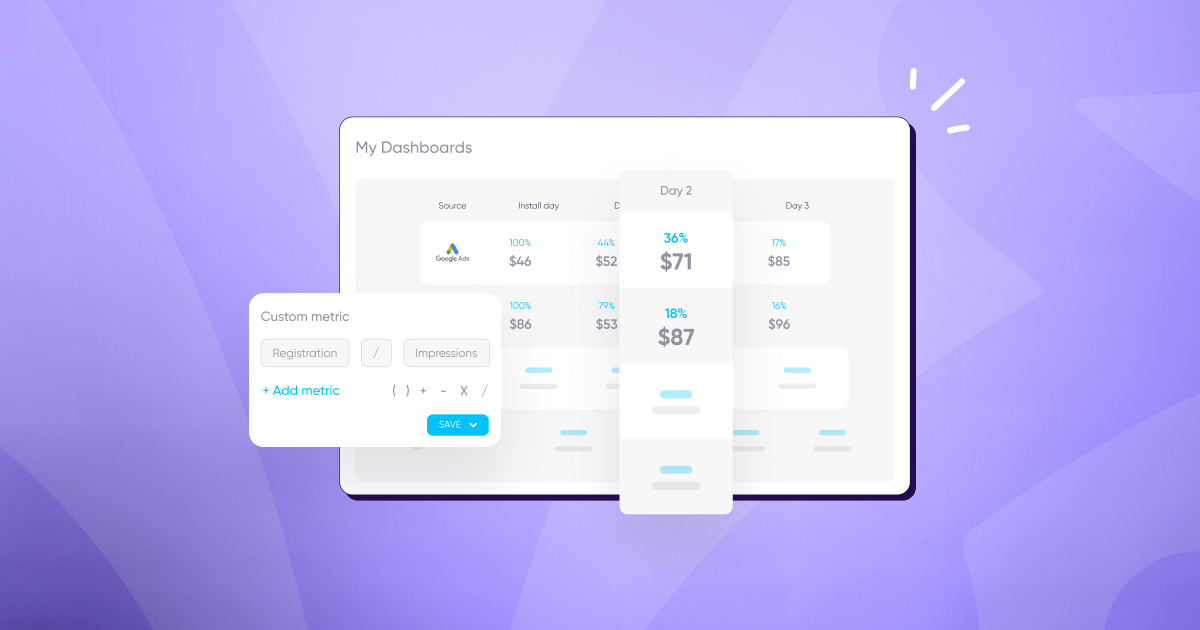
Automate or stagnate: your mobile marketing automation guide
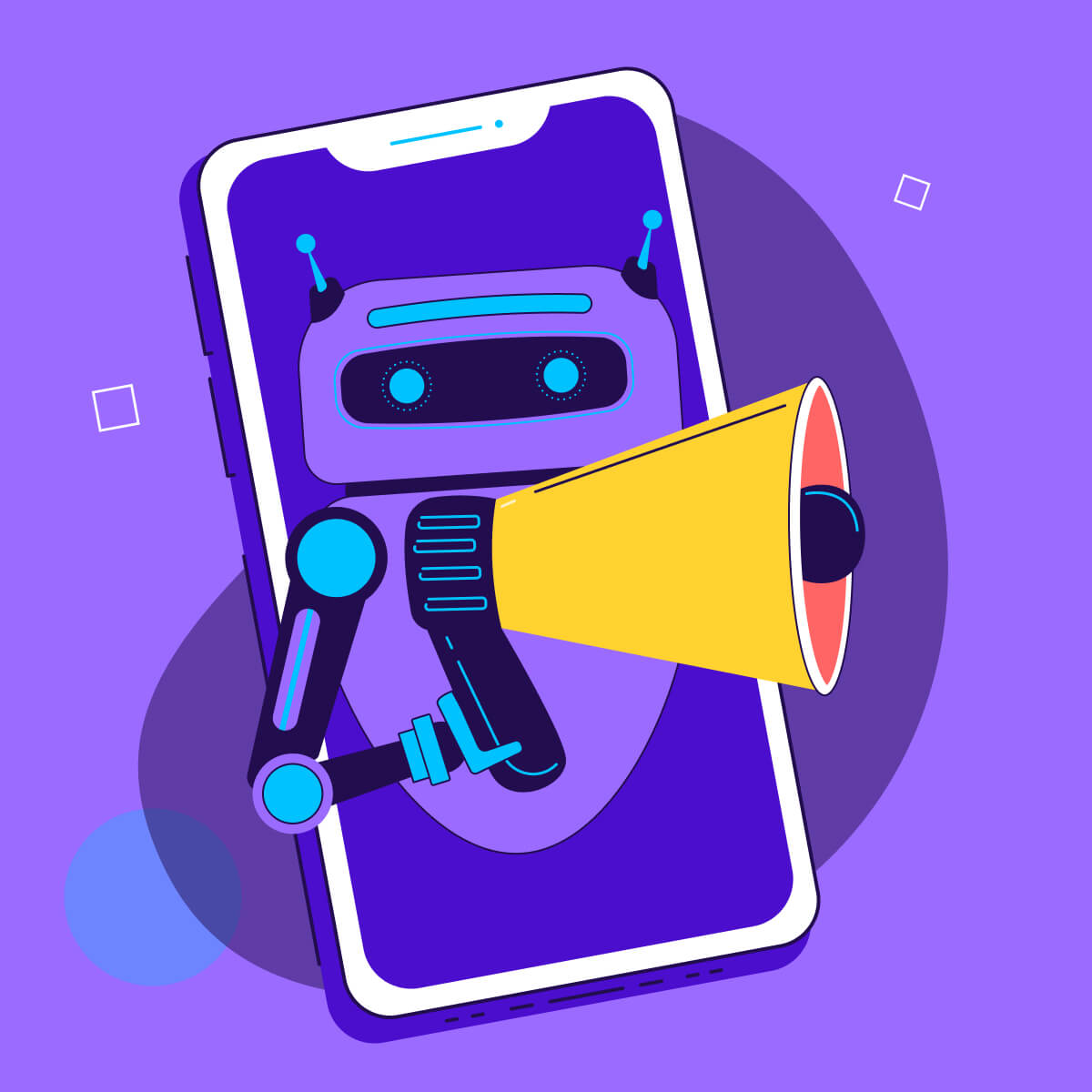
Long before AI was on the tip of every marketer’s tongue, automation became central to mobile marketing campaigns.
When you’re dealing with thousands or millions of users, and vast quantities of data, pen and paper (or even hundreds of spreadsheets) just won’t cut it. The only way to scale your mobile marketing efforts today is to automate some of the processes.
In this guide, we’ll talk about every aspect of automation in mobile marketing, from its definition to practical applications you can take home today. Let’s get started!
What is mobile marketing automation?
Mobile marketing automation is about using technology to handle and scale processes that would otherwise have to be done manually. Mobile marketers can automate everything from multivariate testing to sending relevant push notifications based on event triggers (more on this later).
Mobile marketing automation harnesses data to generate insights, dissect user behavior, and deliver personalized messaging and in-app experiences to ultimately help drive more revenue.
Benefits of mobile marketing automation
To bring the benefits of mobile marketing automation to life, let’s go through some of the practical use cases for it today.
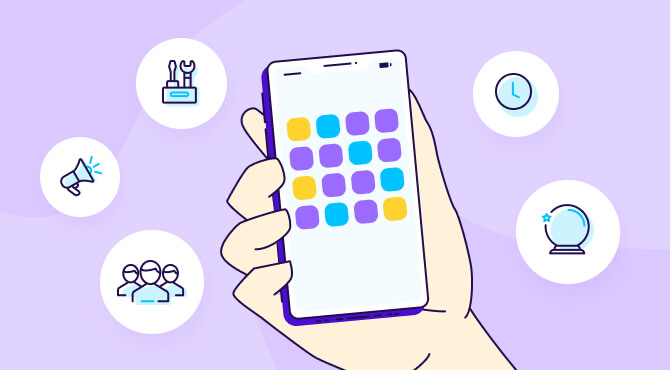
Build your cohorts
Instead of sending a mass marketing campaign to as many people as possible, automation can help you get granular in your marketing by splicing your audience into separate cohorts. With tools like Mixpanel, Google Analytics, FullStory, or a CRM, you’ll be able to build cohorts with the following criteria:
- Geographical data: country, state, city, or zipcode
- Behavioral patterns: app usage, browsing history, search behavior, purchase behavior
- Demographics: age, gender, occupation, income, family status
- Psychographics: interests, hobbies, values, communities, political affiliations
- Acquisition: when and/or how a user was acquired
Test, test, test
Whether it’s determining the most effective creatives for acquisition or experimenting with your app store listing page, automation makes it easy to run A/B testing. This means splitting a significant percentage of your traffic into two or more groups, exposing each group to a different variable (say, an alternate color palette or call to action), and measuring how they perform based on those changes.
Major ad platforms offer A/B testing, enabling you to see what resonates with your unique cohorts, improve conversion rates, and make informed decisions about new features or designs. And now, with the integration of AI, some ad platforms can change the color, copy, music, and sizing of your ads automatically for you as well.
Spread the word
Running a referral program isn’t easy, but it can be a fantastic acquisition channel when done right. While some apps seem to automatically spread like wildfire, the reality is that most need a bit of help. It can get a bit complex, because an effective referral program needs to do all of the following:
- Identify triggers that prompt a referral
- Message users at the appropriate times
- Send incentives
- Track the medium where they signed up
- Pay out rewards
- Measure performance
- Authenticate new users
- Remove duplicate accounts

It’s crucial that referral automation tools are plugged into your user data and can also nurture your user base. This means you’re sending automated and personalized messaging to ensure users are receiving timely reminders and updates on their referral progress.
Say the right thing at the right time
Automation gives marketers the ability to tailor the right content and messaging to the right people at the right time. Whether it’s offering a major discount to your most loyal customers, or nudging a dormant user to come back with a perfectly timed push notification, personalization dramatically improves the user experience.
Think about the For You Page on TikTok, which feeds you content that you crave. Marketing automation can help serve dynamically personalized content, or messages triggered by certain actions – like offering a discount for extra lives to a Candy Crush player who’s been stuck on the same level for hours.
Learn from the past and predict the future
Instead of leaving your marketing to best guess and gut feeling, automation can help connect dots from massive datasets in a way that humans can’t. Whether it’s journey mapping or connecting user behavior across multiple channels, automation is crucial in unearthing insights that can help you build a better user experience with real data.
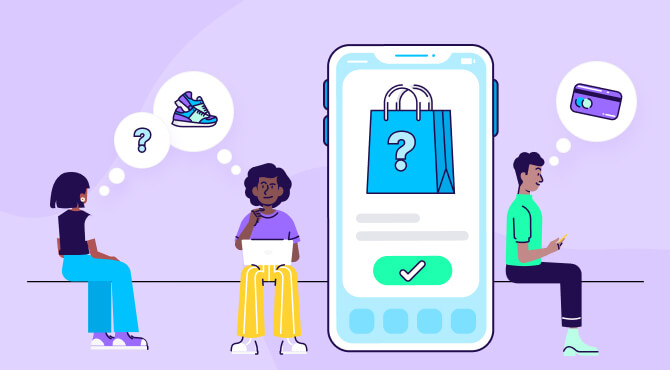
However, the biggest draw of automation is the ability to predict future behavior. By revealing patterns in user behavior, it can help you better understand your cohorts and provide valuable clues as to how they’ll behave in the future.
Types of mobile marketing automation
Now that we’ve covered all the great things you can do with marketing automation, let’s get more technical. We can categorize mobile marketing automation into three buckets: user-based, event-based, and predictive automation.
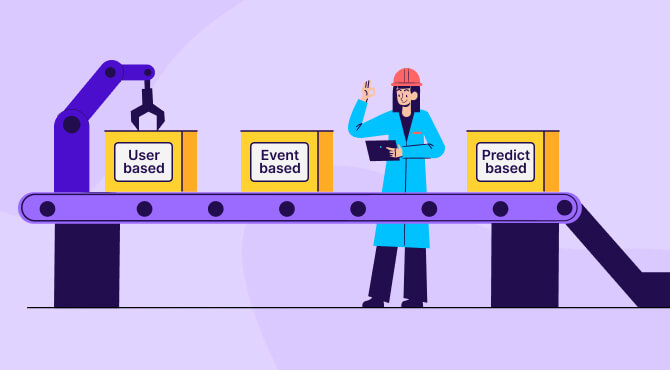
1. User- or audience-based automation
If you have a segmented audience, you can create audience-based automation flows that create a user experience based on their defining characteristics. For example, you can send a personalized offer to your most loyal mobile game players who have spent at least $1 to entice them to make repeat purchases. Alternatively, it can be as simple as sending out push notifications based on the users’ timezone, or re-engaging with dormant users to encourage them to come back.
2. Event-based automation
Event-based automation is when a marketing campaign is triggered by a predefined set of user behaviors as they happen in real time, which is an effective way to increase customer engagement and retention.
This can come in many forms, such as sending a “refer a friend” discount code after a user makes a purchase. Or it could be offering a significant discount to anyone who has recently downgraded their spending.
3. Prediction-based automation
While most marketing automation is based on real-time and historical data, predictive modeling can help you recognize patterns in user data that have a high chance of leading to a particular in-app event. Automation can be used to identify correlations between user behavior that might not be obvious when done manually.
For example, your data may show that users who use your workout app heavily in the first 48 hours are less likely to be consistent. Knowing this, you can increase your re-engagement campaigns to proactively entice users to continue using the app.
How do you automate your mobile marketing campaigns?
Mobile marketing automation enables marketers to engage users at every point in the customer journey – from sign-up to purchase and beyond. Let’s look under the hood to better understand how automation actually works in mobile marketing.
Gather your foundational data
To use automation effectively, you’ll need to have access to trustworthy, relevant, and clean data as the foundation for your marketing campaigns — whether you get it via a data clean room or by working with a mobile measurement partner (MMP). Here are some of the types of data you can gather, depending on your objectives:
- General metrics: app downloads, numbers of installs, registrations, app usage
- User engagement: traffic, daily active users, session length, retention rate, popular content, search queries, churn rate
- User experience: app load time, device type, API latency, performance, accessibility
- Financial KPIs: customer lifetime value (LTV), average revenue per user (ARPU), purchases, cost per install (CPI), return on investment (ROI), conversion rates
Identify the right users
Based on the data at your disposal, determine your goals for your marketing campaign. Are you trying to increase app usage? Or do you want to generate more sales? With that goal in mind, look at the data to identify which users are most likely to help move the needle. The more specific you can get, the more targeted, timely, and impactful your marketing campaigns can be.

Determine the channel mix
What would be the best way to reach your target audience? Determine whether you want to send an automated email sequence, deliver push notifications, or even tailor the in-app experience. Whatever it may be, take this step to think about what channel(s) you want to invest in to meet your objectives.
Create the content
With your foundations in place, it’s time to develop the content. Creating content specific to the users you identified earlier is essential, regardless of whether you’re writing copy for a push notification, an in-app message, or an email campaign. Automation tools can help personalize the content by including the user’s name, favorite characters, tailored product recommendations, or location.
Execute your channels
Identify what will trigger your campaign, whether it’s user-based, event-based, or prediction-based automation. With that, run your campaign across the channels you’ve decided are most appropriate. Analytics tools use automation to gather and analyze the data across multiple platforms.
Test, measure, and optimize
Build a constant feedback loop to ensure your campaigns are constantly improving. Start by A/B testing your content, timing, and messaging. Analytics and measurement tools can help determine the success or failure of marketing campaigns, so you can adjust accordingly.
Best practices
Now you know the theory, let’s get into the real strategies to help you execute flawless marketing campaigns by leveraging automation tools.
Prioritize feedback
Collecting feedback from your most loyal users can provide invaluable insights into what’s making or breaking your app. You can start simple by implementing a Net Promoter Score (NPS), which asks users to gauge how much they like the app on a scale of 1-10. Ask why dissatisfied users are so unhappy, and encourage happy users to leave a rating in the App Store to boost your listing. Whatever method you choose, having an open line of communication with your users is key.
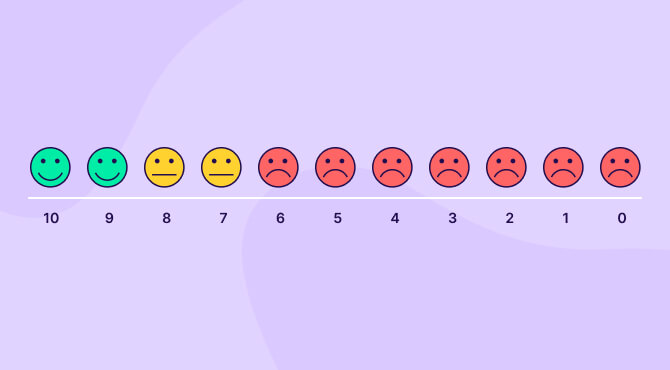
Don’t spam, but send reminders
While we talked in depth about the importance of receiving feedback, let’s focus on the other side of the coin. There’s a reason why every content creator will tell you to click that notification bell for alerts whenever they post a new video. You want to be able to get your message across to your users as often as possible.
In the same way, the frequency and quality of the emails and push notifications you send matter. The last thing you want to do is annoy your users – you want to re-engage, inform, and nurture them at a pace that’s helpful and not intrusive. Set frequency caps on how many notifications you’re sending, and let the data dictate which notifications convert the highest.
Ensure your data is trustworthy
Automating your marketing campaigns means nothing if you’re not working with reliable data in the first place. No algorithm can make accurate predictions or inform your strategy with outdated or irrelevant data. And in today’s multi-channel world, determining which media source deserves credit for driving a conversion is key. Working with a mobile measurement partner can help you measure campaign performance across numerous marketing channels, media sources, and ad networks.
Focus on the customer journey
While you may find that a flurry of push notifications gives you a brief spike in user engagement, this spammy approach is hurting the user experience in the long run. Identifying the timing, frequency, and triggers of your marketing campaigns is a worthwhile experiment that will continuously improve the user experience over time.
Location-based campaigns
Using location triggers for your automation campaigns can be incredibly helpful, particularly for apps also reliant on offline activity and sales. For example, you can send users within a certain geographic area deals and discounts in stores near them. You can also use geofencing to reach users attending a particular event, or offer discounts at nearby restaurants – like sending a coupon notification to users near your cafe. Or you could even send promotional offers to users who may have visited your competitor’s business.
Key takeaways
- Mobile marketing automation is about using technology to handle and scale processes that would otherwise have to be done manually. It harnesses data that generates insights and helps you create more personalized user experiences.
- Benefits of mobile marketing automation include being able to automatically build user cohorts, run A/B tests, send timely messaging, and predict future user behavior. You can also use it to set up referral programs for effective acquisition, tracking, and rewards.
- The three main triggers for automation campaigns are user-based, event-based, and prediction-based.
- The foundation of successful mobile marketing automation is reliable data, which can be achieved with analytics tools and working with an MMP to ensure you’re crediting the relevant marketing channels for every conversion.
- Once you have solid data, you can identify the highest-value users and channels to focus on and develop creatives that resonate. Remember to keep testing, measuring, and optimizing your campaigns.
- Mobile marketing automation should always be about the user experience. Listen to your users, focus on their journey, and meet them where they are (without spamming them).


